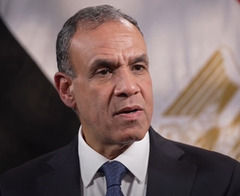What's in a Name? The Fascinating Reason We Say Sita-Ram Before Ram-Sita!
Names in Hindu culture have deep spiritual, historical, and philosophical implications. One such noteworthy linguistic and religious behaviour is the preference for saying "Sita-Ram" instead of "Ram-Sita." At first glance, it may appear to be a small feature, but this slight distinction has profound cultural, religious, and linguistic implications. The arrangement of these names represents centuries of tradition, devotion, and reverence for the divine feminine.
Power of Name Order in HinduismIn Hindu traditions, the order in which holy names are uttered is frequently purposeful. When referring to celestial couples, the goddess' name is frequently used before that of the god. For example:
1. Radha-Krishna; not Krishna-Radha.
2. Gauri-Shankar; not Shankar-Gauri.
3. Lakshmi-Narayan, not Narayan-Lakshmi.
Similarly, Sita's name is often used before Ram's in devotional practices. The reasons for this are deeply ingrained in Hindu philosophy, reverence for heavenly energy (Shakti), and the tradition of the Bhakti movement.
1. The Primacy of Shakti: Feminine Energy Prior to MasculineOne of the main reasons for pronouncing "Sita-Ram" is the concept of Shakti and Shiva, in which the feminine force (Shakti) is seen as the dynamic power that permits divine action.
1. Shakti signifies creation, energy, and power, whereas Purusha (the masculine principle) represents awareness and stability.
2. Shiva is typically portrayed as impotent in the absence of Shakti. Similarly, without Sita's presence, Lord Ram's trip in the Ramayana would not have served its goal.
3. This is why, in many traditions, the divine feminine is initially invoked, recognising her as the energy that enables divine action.

2. A sign of deep respect for women.The placement of Sita's name before Ram's reflects Hindu culture's strong reverence for women, particularly Sita, who is seen as the personification of purity, devotion, and sacrifice.
1. Sita is regarded as the ideal wife, daughter, and queen, and her presence enhances Ram's reputation as the ideal spouse and king.
2. Saying "Sita-Ram" first honours her participation in Ram's journey, as well as the enormous challenges she overcame with grace and patience.
3. In Hindu households, it is customary to say a woman's name before her husband's in religious circumstances as a show of respect.
3. Impact of the Bhakti MovementThe popularity of "Sita-Ram" stems from the Bhakti movement, a religious movement that swept across India between the 7th and 17th centuries. Saints like
1. Tulsidas (author of Ramcharitmanas), Kabir, Neem Karoli Baba, and Ramakrishna Paramhansa all popularised reciting "Sita-Ram" in devotional songs (bhajans). The simplicity and rhythmic flow of "Sita-Ram" make it an easy and accessible mantra for the general public.
2. Neem Karoli Baba, a twentieth-century saint, frequently encouraged his followers to chant "Sita-Ram" as a means of connecting with divine love.

4. Phonetic and Rhythmic FlowAnother reason why "Sita-Ram" is chosen over "Ram-Sita" is the way the syllables sound and flow.
1. Linguistically, "Sita-Ram" has a natural melodic and rhythmic flow that facilitates repeated chanting.
2. In mantras and bhajans, the euphony (pleasant sound combination) of "Sita-Ram" resonates more than "Ram-Sita," which is a little abrupt.
Because of its easy pronunciation, this line is the foundation of many devotional songs and prayers.
5. The Symbolism of Sita's EnduranceSita's path in the Ramayana is one of great suffering and sacrifice.
1. Ravana kidnaps her and takes her to Lanka, where she spends years.
2. She goes through an agni pariksha (fire trial) to establish her purity.
Despite these hardships, Sita never loses her grace, devotion, or adherence to dharma. She continues to be the ideal example of patience and resilience.
By saying "Sita-Ram," we honour her unyielding strength and enduring commitment by putting her name first.

6. Examples from the Hindu scriptures and practicesThe preference for "Sita-Ram" is not only a cultural choice but also found in many Hindu scriptures and traditions.
1. Tulsidas' Ramcharitmanas frequently uses "Sita-Ram" instead of "Ram-Sita."
2. Devotional songs and prayers frequently begin with "Sita-Ram" as a request for divine benefits.
3. Even in pleasantries and spiritual discussions, "Sita-Ram" is used as a universal salutation in various parts of India.
A Simple Name, A Profound MessageThe order in which we pronounce divine names is not coincidental; it reflects millennia of tradition, philosophy, and devotion. The custom of reciting "Sita-Ram" before "Ram-Sita" is based on:
1. The Shakti-Purusha principle states that divine energy (Sita) exists before divine consciousness (Ram).
2. The cultural heritage of honouring women, including Sita's sacrifice and courage.
3. The Bhakti movement popularised "Sita-Ram" as a simple, rhythmic chant.
4. The phonetic beauty and simplicity of reciting the phrase.
The symbolism of Sita's persistence, which makes her an essential component of Ram's heavenly story.
Remember that "Sita-Ram" is more than just a name; it is a tremendous acknowledgement of love, devotion, and spiritual strength.
Power of Name Order in HinduismIn Hindu traditions, the order in which holy names are uttered is frequently purposeful. When referring to celestial couples, the goddess' name is frequently used before that of the god. For example:
1. Radha-Krishna; not Krishna-Radha.
2. Gauri-Shankar; not Shankar-Gauri.
3. Lakshmi-Narayan, not Narayan-Lakshmi.
Similarly, Sita's name is often used before Ram's in devotional practices. The reasons for this are deeply ingrained in Hindu philosophy, reverence for heavenly energy (Shakti), and the tradition of the Bhakti movement.
1. The Primacy of Shakti: Feminine Energy Prior to MasculineOne of the main reasons for pronouncing "Sita-Ram" is the concept of Shakti and Shiva, in which the feminine force (Shakti) is seen as the dynamic power that permits divine action.
1. Shakti signifies creation, energy, and power, whereas Purusha (the masculine principle) represents awareness and stability.
2. Shiva is typically portrayed as impotent in the absence of Shakti. Similarly, without Sita's presence, Lord Ram's trip in the Ramayana would not have served its goal.
3. This is why, in many traditions, the divine feminine is initially invoked, recognising her as the energy that enables divine action.

2. A sign of deep respect for women.The placement of Sita's name before Ram's reflects Hindu culture's strong reverence for women, particularly Sita, who is seen as the personification of purity, devotion, and sacrifice.
1. Sita is regarded as the ideal wife, daughter, and queen, and her presence enhances Ram's reputation as the ideal spouse and king.
2. Saying "Sita-Ram" first honours her participation in Ram's journey, as well as the enormous challenges she overcame with grace and patience.
3. In Hindu households, it is customary to say a woman's name before her husband's in religious circumstances as a show of respect.
3. Impact of the Bhakti MovementThe popularity of "Sita-Ram" stems from the Bhakti movement, a religious movement that swept across India between the 7th and 17th centuries. Saints like
1. Tulsidas (author of Ramcharitmanas), Kabir, Neem Karoli Baba, and Ramakrishna Paramhansa all popularised reciting "Sita-Ram" in devotional songs (bhajans). The simplicity and rhythmic flow of "Sita-Ram" make it an easy and accessible mantra for the general public.
2. Neem Karoli Baba, a twentieth-century saint, frequently encouraged his followers to chant "Sita-Ram" as a means of connecting with divine love.

4. Phonetic and Rhythmic FlowAnother reason why "Sita-Ram" is chosen over "Ram-Sita" is the way the syllables sound and flow.
1. Linguistically, "Sita-Ram" has a natural melodic and rhythmic flow that facilitates repeated chanting.
2. In mantras and bhajans, the euphony (pleasant sound combination) of "Sita-Ram" resonates more than "Ram-Sita," which is a little abrupt.
Because of its easy pronunciation, this line is the foundation of many devotional songs and prayers.
5. The Symbolism of Sita's EnduranceSita's path in the Ramayana is one of great suffering and sacrifice.
1. Ravana kidnaps her and takes her to Lanka, where she spends years.
2. She goes through an agni pariksha (fire trial) to establish her purity.
Despite these hardships, Sita never loses her grace, devotion, or adherence to dharma. She continues to be the ideal example of patience and resilience.
By saying "Sita-Ram," we honour her unyielding strength and enduring commitment by putting her name first.

6. Examples from the Hindu scriptures and practicesThe preference for "Sita-Ram" is not only a cultural choice but also found in many Hindu scriptures and traditions.
1. Tulsidas' Ramcharitmanas frequently uses "Sita-Ram" instead of "Ram-Sita."
2. Devotional songs and prayers frequently begin with "Sita-Ram" as a request for divine benefits.
3. Even in pleasantries and spiritual discussions, "Sita-Ram" is used as a universal salutation in various parts of India.
A Simple Name, A Profound MessageThe order in which we pronounce divine names is not coincidental; it reflects millennia of tradition, philosophy, and devotion. The custom of reciting "Sita-Ram" before "Ram-Sita" is based on:
1. The Shakti-Purusha principle states that divine energy (Sita) exists before divine consciousness (Ram).
2. The cultural heritage of honouring women, including Sita's sacrifice and courage.
3. The Bhakti movement popularised "Sita-Ram" as a simple, rhythmic chant.
4. The phonetic beauty and simplicity of reciting the phrase.
The symbolism of Sita's persistence, which makes her an essential component of Ram's heavenly story.
Remember that "Sita-Ram" is more than just a name; it is a tremendous acknowledgement of love, devotion, and spiritual strength.
Read more









